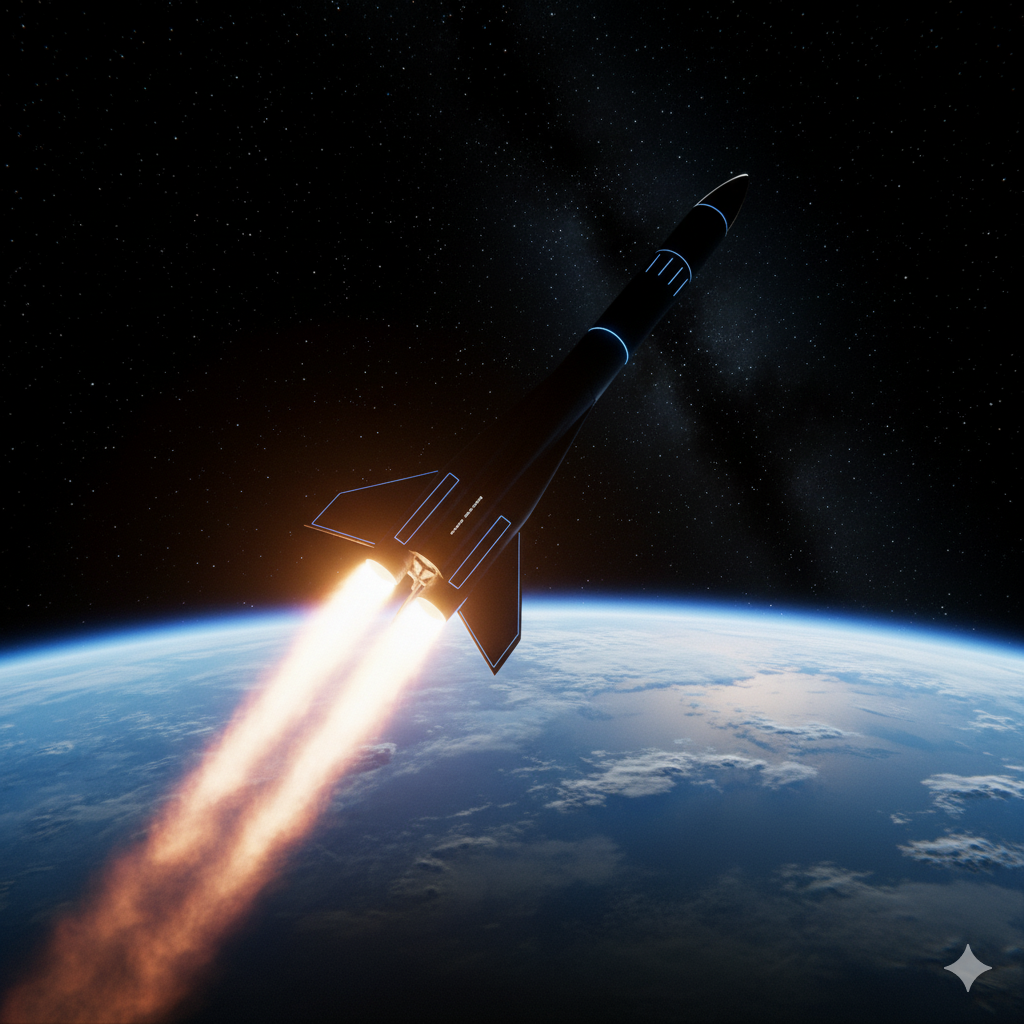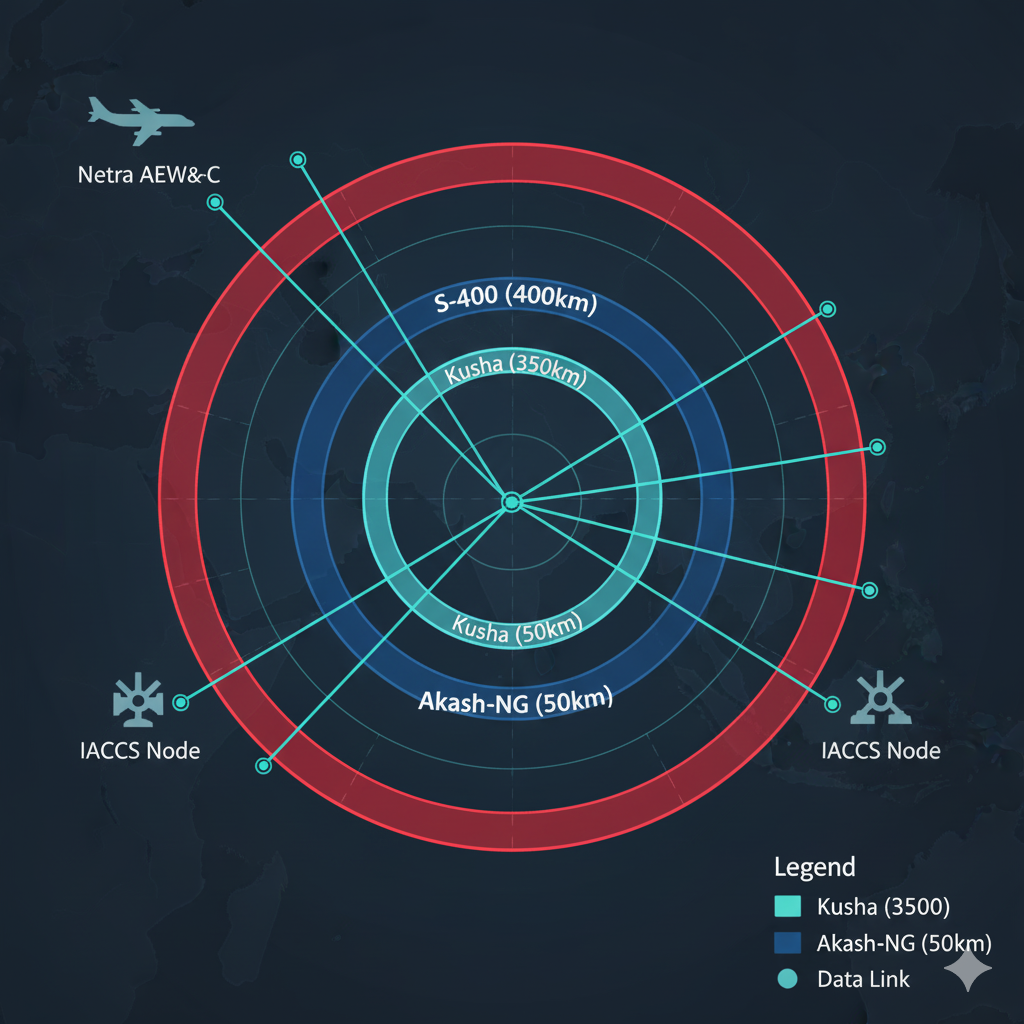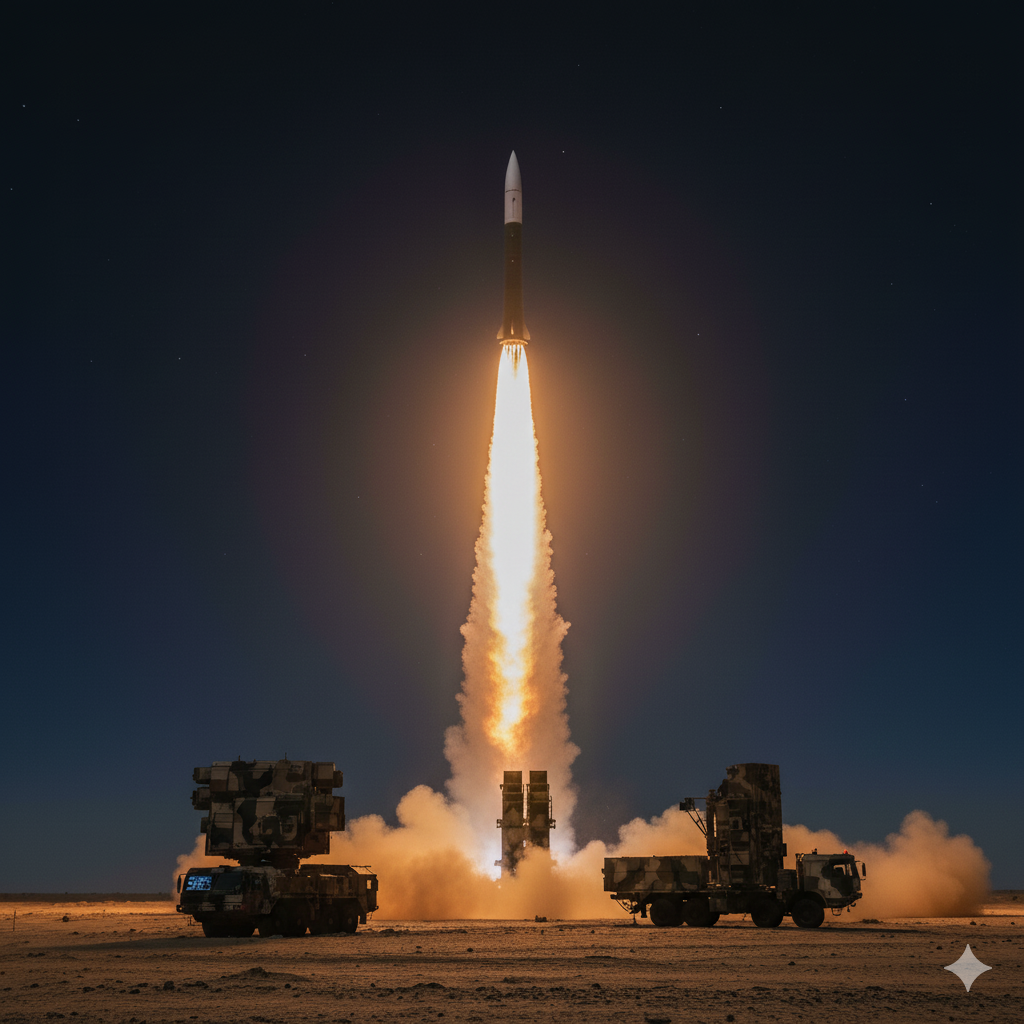With Phase-1 clearance for 5 squadrons, DRDO’s Project Kusha deploys 350km-range SAMs with GaN AESA radar and dual-pulse propulsion—set for full induction by 2028 and export by 2030.
The Defence Acquisition Council (DAC) has granted Acceptance of Necessity (AoN) under Phase-1 for five squadrons of Project Kusha, DRDO’s ambitious long-range surface-to-air missile (SAM) system designed to rival the Russian S-400 and American Patriot PAC-3. With a 350 km engagement envelope, active GaN-based radar, and network-centric architecture, Kusha will form the upper tier of India’s multi-layered air defence grid by 2028.
This program directly complements the Agni-VI MIRV ICBM deterrence and integrates with the T-90 Bhishma’s battlefield shield, creating a seamless land-air defence continuum.
Project Kusha: Three-Tier Interceptor Family
Kusha comprises three missile variants on a common launcher and radar platform:
- Kusha-1: 150 km range, endo-atmospheric intercept (cruise missiles, UAVs)
- Kusha-2: 250 km range, mid-course intercept (aircraft, AWACS)
- Kusha-3: 350 km range, exo-atmospheric kill (ballistic missiles, hypersonics)
All missiles use dual-pulse solid rocket motors for boost-coast-sustain flight, enabling high terminal velocity (> Mach 12) and hit-to-kill precision via active RF + IR seekers.
DRDO Missile Complex Director Dr. BHVS Narayana Murthy stated, “Kusha is India’s answer to 21st-century aerial threats—be it a stealth fighter or a hypersonic glide vehicle.”

Artist’s concept: Kusha-3 climbs with dual-pulse burn during high-altitude trial (DRDO Render)
GaN AESA Radar: The Game-Changer
At the heart of Kusha is the Gallium Nitride (GaN) based Multi-Function Radar (MFR), developed by LRDE Bengaluru:
- Detection Range: 600 km (RCS 2m²)
- Tracking: 200 targets simultaneously
- Engagement: 24 missiles in flight
- Beam Agility: Electronic steering in < 1 ms
- Anti-Jam: Frequency hopping + adaptive nulling
GaN modules offer 40% higher power density than GaAs, enabling longer burn time and reduced cooling needs—ideal for mobile deployments in Ladakh or Rajasthan.
Phase-1 Clearance: 5 Squadrons, ₹28,000 Crore
The DAC has approved:
- 5 Squadrons: 40 launchers, 1,200 missiles (mixed variants)
- Budget: ₹28,000 crore over 7 years
- Lead Integrator: Bharat Electronics Limited (BEL)
- Private Partners: Tata Power SED, L&T Defence, Alpha Design
Each squadron includes 8 TELs, 2 MFRs, 1 command post, fully road/rail mobile.
Integration with IACCS & Theatre Commands
Kusha will plug into the Integrated Air Command and Control System (IACCS) and future Air Defence Command:
- Real-time data fusion with Akash-NG, S-400, QRSAM
- Automated kill chain: Netra AEW&C → Kusha MFR → missile launch
- Link-16 compatibility for joint ops with US/QUAD forces
This creates a 500+ km deep air defence bubble over Delhi, Mumbai, and border airfields.

Layered defence: Kusha (350km), S-400 (400km), Akash-NG (50km) in IACCS grid (DRDO Graphic)
Development Timeline: From Lab to Battlefield
Key milestones:
- 2023: PDR completed
- 2025: First Kusha-1 captive flight
- Q2 2026: Kusha-3 guided trial from ITR Chandipur
- 2027: Limited series production (50 missiles)
- 2028: First squadron operational at Ambala AFS
High-altitude trials in Leh (2027) will validate exo-atmospheric intercepts at 100 km altitude.
Export Variant: Kusha-E for Global Markets
DRDO is developing Kusha-E (Export) with:
- Reduced range (280 km) to comply with MTCR
- Modular radar for smaller nations
- Integration with third-party C4I systems
Target customers: Vietnam, UAE, Indonesia—first export order expected 2030 under the $30,000 crore export roadmap.
Strategic Role: Countering China & Pakistan
Kusha will neutralize:
- PL-15E BVR missiles from J-20 stealth fighters
- H-20 strategic bombers over Tibet
- Pakistani Ra’ad-II cruise missiles
Deployed along the Siliguri Corridor and Western Sector, it ensures no-fly zones for adversarial air forces.
Conclusion
Project Kusha is more than a missile system—it’s India’s leap into strategic air defence autonomy. With GaN radar, dual-pulse propulsion, and export-ready design, Kusha closes the gap with S-400 while empowering private industry. By 2028, five squadrons will stand guard over India’s skies, ensuring that any aerial threat—be it a drone or a hypersonic weapon—meets an uncompromising Indian response.
Stay locked: We’ll bring you live updates from the first Kusha-3 guided trial at Chandipur, June 2026.



